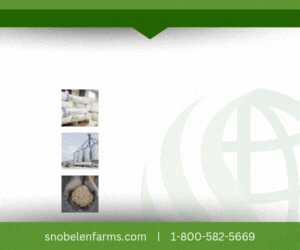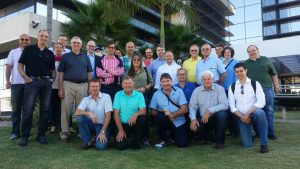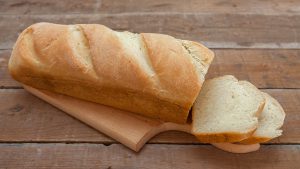Compaction action
EXPLORING TIRE TECHNOLOGY OPTIONS
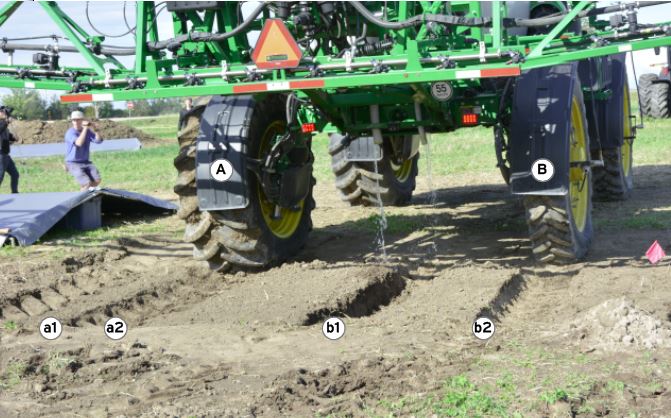
CHOOSING THE RIGHT size tire for any agriculture equipment can be a challenge, especially since the price tag continues to be a big influence on the decision making process. In general, bigger is better but the technology choice can impact the decision.
Tire size and model numbering can be confusing until you understand what it all means. There are two types of numbering systems used, imperial and metric, although the metric is a hybrid of millimeters and inches.
When selecting a tire for your equipment, the goal should be to understand the potential for each piece of equipment to cause soil compaction and then purchase the biggest tire you can afford.
Figure 1 (at top) shows a fully loaded self-propelled sprayer with wide tires on the left (A) and narrower tires on the right (B). From the footprints visible on the soil you can see that each set of tires was operated at a road (a1 +b1) and field (a2+b2) tire pressure.
The close-up of the impression made by the tires and pressures represented in Figure 1 can be seen clearly in Figure 2. These pictures are of the soil cut away from the centre of the ‘lasagna pit’ that was constructed at Innovative Farmers Association of Ontario’s Compaction Action Day to show the surface and subsurface impact of different tire choices on soils. Note that the bigger tires on the left side(A) caused less ruts than the thinner tire on the right (B). The difference in tire pressure was not nearly as pronounced in A with the wider tire as observed with the thinner tire in B.
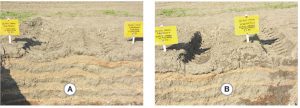
To understand how tire size is expressed, consider the imperial tire designation of 20.8R38. This indicates a tire 20.8 inches wide from sidewall to sidewall, the ‘R’ indicates it’s a radial and the 38 is the rim size in inches. The ‘R’ can be replaced with no letter or a dash, indicating the tire is a bias ply. The metric tire equivalent is 520/85R38 where 520 is the tire width in millimetres from sidewall to sidewall, 85 is the aspect ratio which describes the height of the tire sidewall as a percentage of the tire width. In this case, the sidewall height would be 442mm (85% of 520mm). The 38 is rim size in inches. The imperial tire size doesn’t provide any information about the overall height of the tire or the tire volume. Similarly for a 11L -15 tire, the 11 is width in inches, L stands for low profile, and 15 is the rim diameter in inches. An 11L -15 and 11:00-15 will be very different overall diameters and that is not readily apparent in the number.
There may be some other information provided on the sidewall of the tire or in the model or size coding. Increased Flex (IF) and Very Flexible (VF) tires are a special type of radial tire and the number will be the same as a radial with the addition of IF or VF somewhere in the number, such as VF 520/85R38. These tire technologies will be discussed in an accompanying article at www.ontariograinfarmer.ca.
The metric designation is much more useful in understanding and choosing the correct tire. Aspect ratio combined with tire width and height indicates tire volume. It is this volume that gives us a real ability to manage the potential soil compaction if the technology allows us to do so. Two tires can have the same overall diameter, but the tire with the smaller rim diameter and taller sidewall will allow for a larger increase in footprint when you reduce the air pressure assuming the tire widths are equal (Figure 3). Why this is important is also directly related to the tire technology type being considered.
Bias ply tires are made using long strips of rubber plies that wrap at an angle. You can think of it as the same way you would tape a hockey stick, where each wrap overlaps the previous and you change direction with each ply. This means that the sidewall and the tread face of the tire behave as one mechanical system and any flex in the sidewall of a bias tire will deform the tread face causing a loss in contact with the soil surface and thus traction. In addition, the design of the bias tire means that the sidewall must be rigid at all times for the tire to support the weight of the implement. This does not leave any opportunity to adjust the tires footprint by manipulating inflation pressure.
Radial tires are made using plies that wrap at right angles to the tread face to create a sidewall, and separate plies that wrap around the circumference to create the tread itself. When the sidewall on radial tires flex, the face of the tire stays flat on the ground. This greater footprint from the extended contact patch of the tread pattern reduces the weight per square inch exerted on the soil. This reduces the potential for soil compaction to a significant degree but can be over ridden by the axle weight of the entire implement which is true of any tire technology.

The difference in tire construction requires that bias ply tires need more air pressure to maintain their shape so that the tread face does not deform. A radial tire can operate at lower pressure than the same size bias tire since the sidewall flexibility allows the tire to deflect slightly without causing the tread face to deform or compromise the tire integrity.
It’s somewhat surprising that we continue to even consider bias ply tires in agriculture. Their biggest feature for continued use is that they are cheap. Bias tires typically are smaller and require high inflation pressures because the integrity of the tire sidewall demands rigidity to support the tire function. There is significant potential for tire failure if you run them too low in pressure. During the recent demonstrations we’ve hosted, we have learned that there are very few situations where bias ply tires are the correct choice for farm implements today.
Considering soil compaction, you can operate radial tires in the field at lower inflation pressure. Tire manufacturers do not generally support the lower inflation pressures with radial tires because of the concern for tire failure. This failure is most often a function of low inflation pressure during higher speed road travel under full load and especially during turning. In the field where speed is slower and the load tends to be high for shorter distances, and turns can be even slower, the chance for tire failure decreases greatly, but farmers are on their own warranty-wise with these choices.
Manufacturers are coming around to the need for lower inflation pressures in the field. This is being addressed by new tire construction technologies and the potential of on the go inflation/deflation systems to rapidly adjust inflation pressure between road and field travel.
Go to www.ontariograinfarmer.ca for more on how tire technologies are allowing the manipulation of tire inflation pressure to reduce the potential for soil compaction.
This article is part of a series highlighting lessons learned from the IFAO Compaction Action Day. Demonstration results, detailed demonstration set-up information, and a series of videos featuring the experts and topics from this day can be found at www.ifao.com. •


